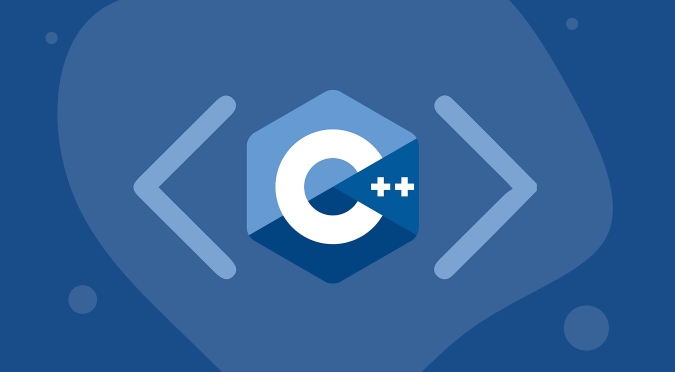There are three effective ways to generate UUIDs or GUIDs in C: 1. Use the Boost library, which provides multi-version support and is simple to interface; 2. Manually generate Version 4 UUIDs suitable for simple needs; 3. Use platform-specific APIs (such as Windows' CoCreateGuid), without third-party dependencies. Boost is suitable for most modern projects, manual implementation is suitable for lightweight scenarios, and platform API is suitable for enterprise environments.

If you need to generate a UUID or GUID in C , there's no built-in standard library support for it prior to C 20, and even then, it's limited. So, most developers either use external libraries or implement their own solutions based on known UUID versions.

Here's how you can do it effectively depending on your needs and environment.

Use a Library Like boost::uuids
Boost is one of the most common and reliable ways to generate UUIDs in C . It supports multiple UUID versions and provides clean APIs.
- Install Boost (if not already installed) via package managers like vcpkg or directly from source.
- Include
<boost></boost>and<boost></boost>. - Use the random generator like this:
#include <boost/uuid/uuid.hpp>
#include <boost/uuid/uuid_generators.hpp>
#include <boost/uuid/uuid_io.hpp>
#include <iostream>
int main() {
boost::uuids::uuid uuid = boost::uuids::random_generator()();
std::cout << uuid << std::endl;
return 0;
}This gives you a Version 4 UUID by default. If you need other versions, Boost has support for things like name-based (Version 3 or 5) and time-based (Version 1) UUIDs as well.

Generate Manually for Simple Needs
If you don't want to pull in a big library like Boost, you can generate a basic Version 4 UUID manually.
A Version 4 UUID looks like this: xxxxxxxx-xxxx-4xxx-yxxx-xxxxxxxxxxxx
Where:
- The third group starts with "4" (indicating version 4).
- The fourth group starts with "8", "9", "a", or "b".
You can create a random string following that pattern using something like:
#include <random>
#include <string>
#include <iostream>
std::string generate_uuid_v4() {
static std::random_device rd;
static std::mt19937 gen(rd());
static std::uniform_int_distribution<> dis(0, 15);
static std::uniform_int_distribution<> dis2(8, 11);
std::string uuid = "xxxxxxx-xxxx-4xxx-yxxxx-xxxxxxxxxxxxxxxxx";
for (int i = 0; i < uuid.size(); i) {
if (uuid[i] == 'x') {
int r = dis(gen);
uuid[i] = "0123456789abcdef"[r];
} else if (uuid[i] == 'y') {
int r = dis2(gen);
uuid[i] = "89ab"[r - 8];
}
}
return uuid;
}
int main() {
std::cout << generate_uuid_v4() << std::endl;
return 0;
}This isn't cryptographically secure but works fine for simple applications.
Use Platform-Specific APIs (Windows Example)
On Windows, you can use the native API CoCreateGuid , which is part of the COM library.
Steps:
- Include
<objbase.h> - Link against
ole32.lib - Call
CoCreateGuid()to fill aGUIDstruct
Example:
#include <objbase.h>
#include <iostream>
std::string guid_to_string(const GUID &guid) {
char guidStr[37];
sprintf_s(guidStr,
"X- X- X- X- X X- XXXXXX",
guid.Data1, guid.Data2, guid.Data3,
guid.Data4[0], guid.Data4[1],
guid.Data4[2], guid.Data4[3],
guid.Data4[4], guid.Data4[5],
guid.Data4[6], guid.Data4[7]);
return std::string(guidStr);
}
int main() {
CoInitialize(nullptr);
GUID guid;
CoCreateGuid(&guid);
std::cout << guid_to_string(guid) << std::endl;
CoUninitialize();
return 0;
}This method avoids third-party dependencies and uses OS-level tools, which can be helpful in enterprise environments.
Summary of Options
- Boost : Full-featured, easy to use, supports multiple UUID versions.
- Manual generation : Lightweight, good for basic needs, not secure.
- Platform-specific APIs : No external dependencies, but not portable.
Depending on your project setup and requirements, pick the method that fits best. For most modern projects, Boost is the easiest and safest bet unless you have strict dependency limits.
Basically that's it.
The above is the detailed content of How to generate a UUID/GUID in C ?. For more information, please follow other related articles on the PHP Chinese website!

Hot AI Tools

Undress AI Tool
Undress images for free

Undresser.AI Undress
AI-powered app for creating realistic nude photos

AI Clothes Remover
Online AI tool for removing clothes from photos.

Clothoff.io
AI clothes remover

Video Face Swap
Swap faces in any video effortlessly with our completely free AI face swap tool!

Hot Article

Hot Tools

Notepad++7.3.1
Easy-to-use and free code editor

SublimeText3 Chinese version
Chinese version, very easy to use

Zend Studio 13.0.1
Powerful PHP integrated development environment

Dreamweaver CS6
Visual web development tools

SublimeText3 Mac version
God-level code editing software (SublimeText3)
 What is high-frequency virtual currency trading? The principles and technical implementation points of high-frequency trading
Jul 23, 2025 pm 11:57 PM
What is high-frequency virtual currency trading? The principles and technical implementation points of high-frequency trading
Jul 23, 2025 pm 11:57 PM
High-frequency trading is one of the most technologically-rich and capital-intensive areas in the virtual currency market. It is a competition about speed, algorithms and cutting-edge technology that ordinary market participants are hard to get involved. Understanding how it works will help us to have a deeper understanding of the complexity and specialization of the current digital asset market. For most people, it is more important to recognize and understand this phenomenon than to try it yourself.
 C vector get first element
Jul 25, 2025 am 12:35 AM
C vector get first element
Jul 25, 2025 am 12:35 AM
There are four common methods to obtain the first element of std::vector: 1. Use the front() method to ensure that the vector is not empty, has clear semantics and is recommended for daily use; 2. Use the subscript [0], and it also needs to be judged empty, with the performance comparable to front() but slightly weaker semantics; 3. Use *begin(), which is suitable for generic programming and STL algorithms; 4. Use at(0), without manually null judgment, but low performance, and throw exceptions when crossing the boundary, which is suitable for debugging or exception handling; the best practice is to call empty() first to check whether it is empty, and then use the front() method to obtain the first element to avoid undefined behavior.
 How to develop AI-based text summary with PHP Quick Refining Technology
Jul 25, 2025 pm 05:57 PM
How to develop AI-based text summary with PHP Quick Refining Technology
Jul 25, 2025 pm 05:57 PM
The core of PHP's development of AI text summary is to call external AI service APIs (such as OpenAI, HuggingFace) as a coordinator to realize text preprocessing, API requests, response analysis and result display; 2. The limitation is that the computing performance is weak and the AI ecosystem is weak. The response strategy is to leverage APIs, service decoupling and asynchronous processing; 3. Model selection needs to weigh summary quality, cost, delay, concurrency, data privacy, and abstract models such as GPT or BART/T5 are recommended; 4. Performance optimization includes cache, asynchronous queues, batch processing and nearby area selection. Error processing needs to cover current limit retry, network timeout, key security, input verification and logging to ensure the stable and efficient operation of the system.
 C bit manipulation example
Jul 25, 2025 am 02:33 AM
C bit manipulation example
Jul 25, 2025 am 02:33 AM
Bit operation can efficiently implement the underlying operation of integers, 1. Check whether the i-th bit is 1: Use n&(1
 C Standard Library Explained
Jul 25, 2025 am 02:11 AM
C Standard Library Explained
Jul 25, 2025 am 02:11 AM
The C standard library helps developers improve code quality by providing efficient tools. 1. STL containers should be selected according to the scene, such as vector suitable for continuous storage, list suitable for frequent insertion and deletion, and unordered_map is suitable for fast search; 2. Standard library algorithms such as sort, find, and transform can improve efficiency and reduce errors; 3. Intelligent pointers unique_ptr and shared_ptr effectively manage memory to avoid leakage; 4. Other tools such as optional, variant, and function enhance code security and expressiveness. Mastering these core functions can significantly optimize development efficiency and code quality.
 C function example
Jul 27, 2025 am 01:21 AM
C function example
Jul 27, 2025 am 01:21 AM
Functions are the basic unit of organizing code in C, used to realize code reuse and modularization; 1. Functions are created through declarations and definitions, such as intadd(inta,intb) returns the sum of the two numbers; 2. Pass parameters when calling the function, and return the result of the corresponding type after the function is executed; 3. The function without return value uses void as the return type, such as voidgreet(stringname) for outputting greeting information; 4. Using functions can improve code readability, avoid duplication and facilitate maintenance, which is the basic concept of C programming.
 Understanding the C ABI
Jul 24, 2025 am 01:23 AM
Understanding the C ABI
Jul 24, 2025 am 01:23 AM
C ABI is the underlying rule that the compiler follows when generating binary code, which determines mechanisms such as function calls, object layout, name adaptation, etc. 1. It ensures that different compilation units interact correctly, 2. Different compilers or versions may adopt different ABIs, affecting dynamic library links, STL transfers, virtual function calls, etc. 3. Cross-platform development, long-term system maintenance, third-party library use and other scenarios need to pay special attention to ABI consistency, 4. ABI can be controlled through macro definitions and compilation options, and use tools to view the symbol table to judge consistency.
 C std::is_same example
Jul 24, 2025 am 03:22 AM
C std::is_same example
Jul 24, 2025 am 03:22 AM
std::is_same is used to determine whether the two types are exactly the same at compile time and return a bool value. 1. In the basic usage, std::is_same::value is true when T and U are exactly the same, otherwise it is false. Different modifiers such as const, reference, pointer, etc. will cause false; 2. You can remove the type modification with std::remove_const, std::remove_reference and other types, and then compare it to achieve more flexible type judgment; 3. It is often used in template metaprogramming in practical applications, such as conditional compilation with ifconstexpr, and perform different logic according to different types; 4.






